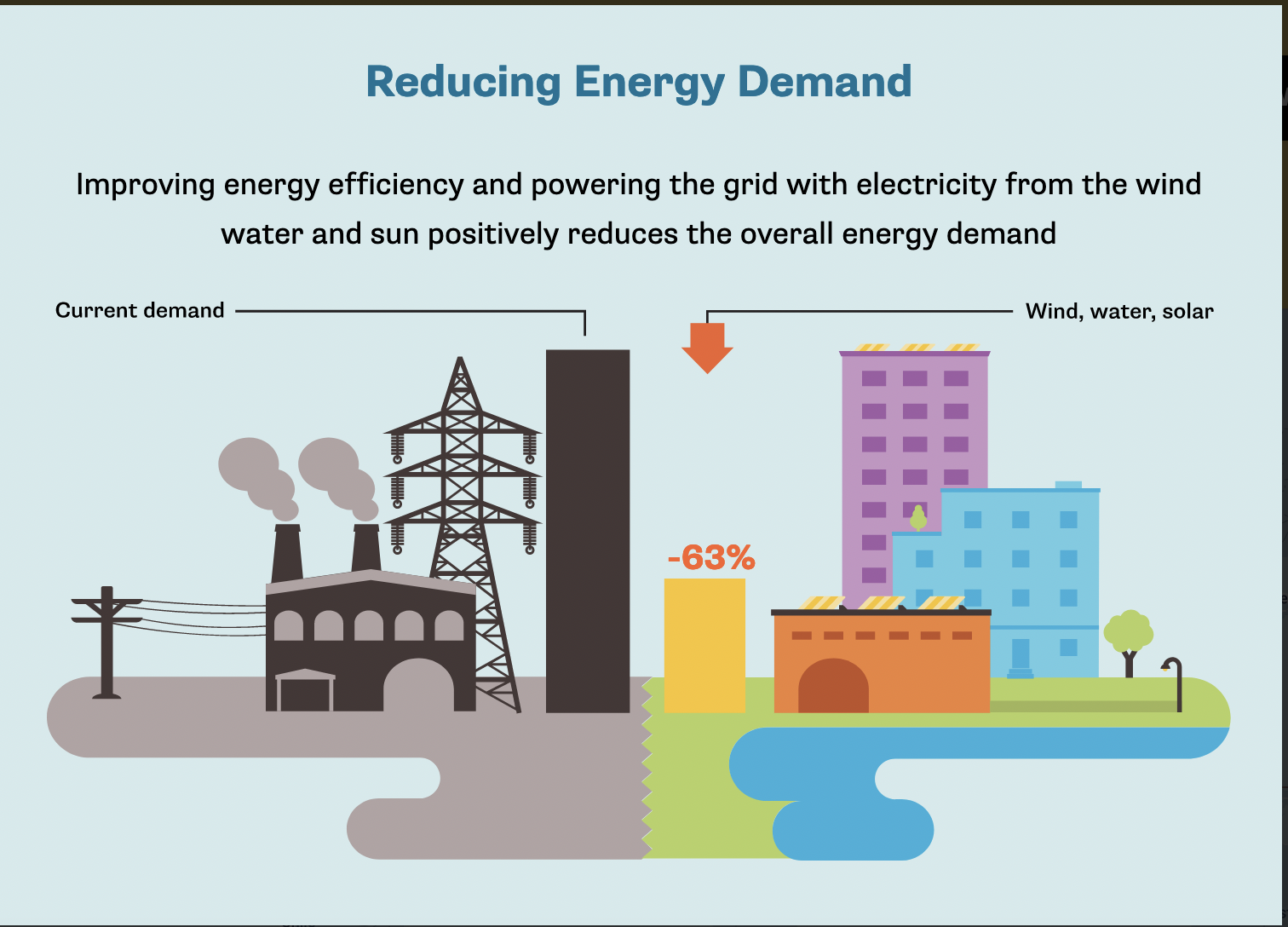It can be challenging to imagine the extent and implications of the disruptions currently unfolding simultaneously in our foundational systems of transportation, energy, goods and food production. Many fear that we will have insufficient resources to make the shift or that living standards will collapse in the process. But that’s not a given.
For one thing, the new systems require a fraction of traditional inputs like energy, water, land, animals and vehicles, so we do not need to replace these items one for one. Not even close.
In just one example, moving to 100% wind, water, and solar energy is so much more efficient than our present system. It will reduce Canada’s aggregate power demands 63% from current levels, as shown here from Stanford’s The Solutions Project.
 Furthermore, when sharing autonomous transportation as a service, capturing and storing passive energy, and making food and products on-demand with precision fermentation and 3-D printing, we need a fraction of the vehicles and are not having to haul oil, gas, goods and food around the globe like today. So, we won’t need all of the vessels, energy and materials that are presently used for that production and distribution daily.
Furthermore, when sharing autonomous transportation as a service, capturing and storing passive energy, and making food and products on-demand with precision fermentation and 3-D printing, we need a fraction of the vehicles and are not having to haul oil, gas, goods and food around the globe like today. So, we won’t need all of the vessels, energy and materials that are presently used for that production and distribution daily.
Recycling and reusing obsolete infrastructure affords a treasure trove of materials for the new. In addition, ‘rare earth’ minerals are not that rare and, when enabled, new technologies continually evolve to higher efficiencies and more accessible resources.
For a helpful overview of the latest research and developments, see ReThinkX’s Ending the Age of Resource Scarcity: Part 1–Why Mineral Shortages Won’t Derail Clean Energy:
It’s often believed that the clean energy disruption could be fundamentally constrained by resource scarcity in the form of insurmountable raw materials and mineral bottlenecks. Increasingly, some argue that it entails a net decrease in the energy available to societies, and therefore warn of an unavoidable decline in material prosperity in coming decades.
In the following two-part series, we will address some of the most notable perspectives that uphold this mythology. Doing so, we will show that if societies make the right choices – and that’s a big ‘if’ – the clean energy disruption can represent a fundamental break with historical patterns of scarcity and a breakthrough into a new age of energy abundance.


